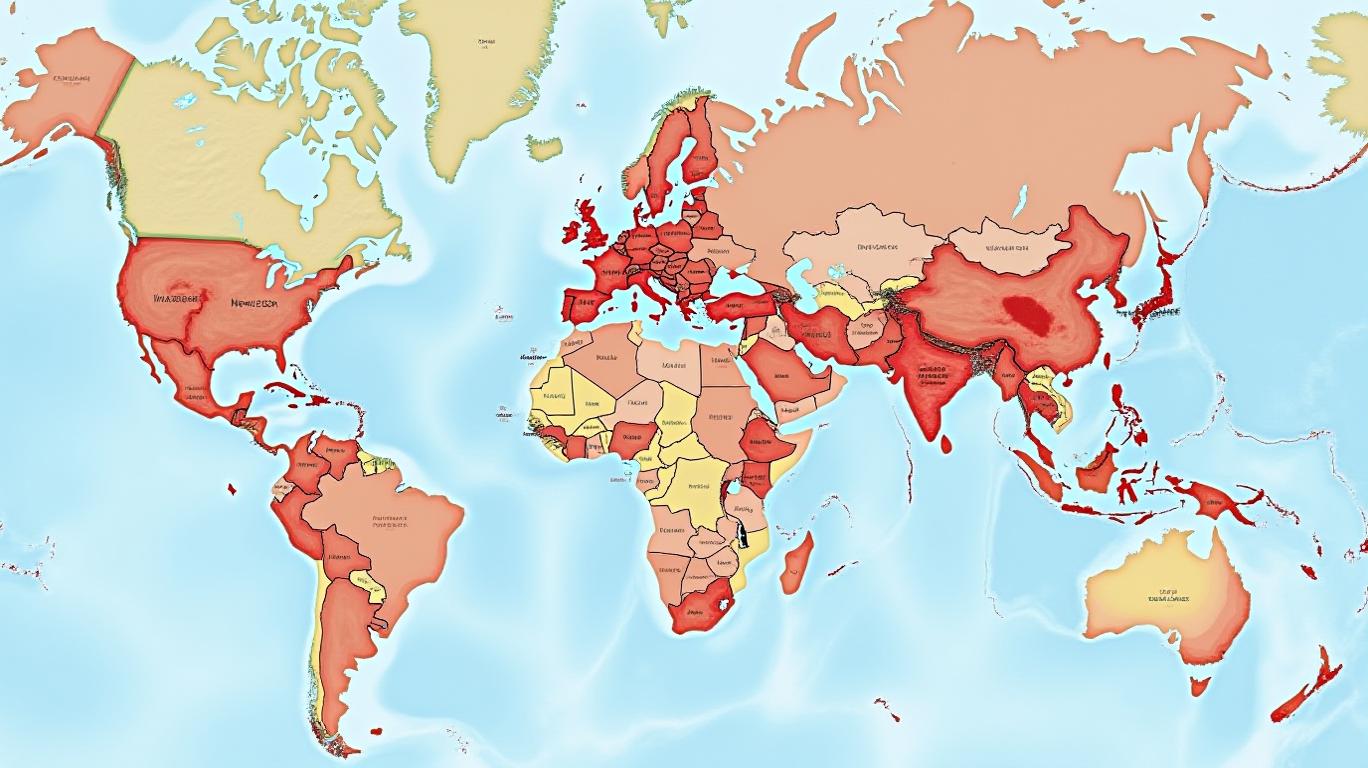After-Hours Stock Surges: Navigating Volatility to Find the Next Long-Term Winners
The stock market’s after-hours session has become a battleground for investors in 2025. As geopolitical tensions, AI breakthroughs, and policy shifts collide,
between short-term noise and sustainable growth opportunities has never been wider. To separate the two, we must dissect the key drivers of volatility and the fundamental catalysts that could define the next decade of outperformance. Let’s dive in.The Volatility Machine: What’s Driving the Chaos?
The market’s current turbulence isn’t random—it’s fueled by three interconnected forces: U.S. trade policy, AI infrastructure spending, and regional divergence in economic fundamentals.
- U.S. Tariff Announcements: A Sword of Damacles Over Global Markets
Recent tariff threats from the U.S. administration have sent ripples through supply chains, particularly hitting sectors like autos, industrials, and consumer goods. The BlackRock report notes that tariff mentions in news articles are now at levels not seen since the 2018–2019 trade wars, creating a climate of “regime uncertainty” that penalizes companies reliant on global supply chains.

AI’s Double-Edged Sword: Capex Spending and Sector Dispersion
The race to build AI infrastructure has created both opportunities and risks. U.S. hyperscalers like Amazon and Microsoft are pouring billions into data centers and cloud computing, while Asian chipmakers like Taiwan Semiconductor Manufacturing (TSM) and ASML are the unsung heroes of the AI era. But not all AI stocks are created equal.Hardware/Infrastructure: Asian semiconductor firms have a correlation of just 64% with U.S. tech indexes (NASDAQ 100), offering diversification.
- Applications/Adoption: Chinese firms like Alibaba and Baidu, leveraging AI-generated content and autonomous driving, have even lower correlations (38%) with U.S. markets.
Regional Divergence: Europe’s Undervalued Potential vs. Asia’s AI Ambitions
While the U.S. boasts robust earnings growth (18% YoY in Q4 2024), Europe is stuck in a “valuation discount” rut—its stocks trade at a 20% discount to U.S. peers despite decent earnings (7% growth). But there’s a silver lining:Europe’s Hidden Gems: Banks (e.g., DBS, Unicredit) are dirt-cheap with resilient earnings, while industrials tied to AI/data centers (e.g., Siemens Energy) offer growth.
- Asia’s AI Ecosystem: China’s tech giants are leveraging AI to offset economic headwinds, but U.S. tariffs remain a near-term overhang.
The Fundamental Catalysts: Where to Anchor for the Long Term
Amid this chaos, three themes stand out as sustainable growth drivers:
U.S. Corporate Quality: ROTIC Reigns Supreme
U.S. companies’ superior Return on Tangible Invested Capital (ROTI) across sectors—driven by AI-driven efficiency and deregulation tailwinds—means they’re “earning their keep.” Companies like Boeing (benefiting from reshoring incentives) and Texas Instruments (AI chip innovator) are prime examples.European Value Stocks: The Undervalued Bargain Bin
European banks and industrials are screaming buys. Take Deutsche Bank, trading at 0.5x book value with improving credit quality, or Bosch, which is pivoting to AI-driven manufacturing tools.AI’s Geopolitical Shield: Asian Chipmakers and Chinese Apps
While tariffs threaten some sectors, Asian semiconductor firms and Chinese AI application companies are insulated by their domestic demand and cost advantages. DeepSeek, a Chinese AI startup outperforming U.S. rivals at half the cost, exemplifies this.
Action Plan: How to Play This in 2025
To capitalize on these trends, investors must blend active management with systematic insights:
- Buy the Dispersion: Focus on U.S. leaders in AI hardware (TSM, ASML) and European value stocks (DB, SIEMENS).
- Avoid the Tariff Crosshairs: Steer clear of auto giants like Toyota and GM unless they’ve fully reshored production.
- Use Data to Filter Noise: Track conference call mentions of “deregulation” or “tariff hedging”—companies proactive here (e.g., Caterpillar) are signaling resilience.
Conclusion: Volatility is the Price of Admission
The market’s current volatility isn’t a bug—it’s a feature. BlackRock’s research underscores that periods of high Economic Policy Uncertainty (EPU >200) have historically preceded rebounds. Investors who anchor in U.S. corporate quality, European value, and Asia’s AI ecosystem will be positioned to outperform once the dust settles.
The question isn’t whether to act—it’s how. The tools to navigate this storm exist. Will you use them?
Invest wisely, but act decisively.

Comments
No comments yet